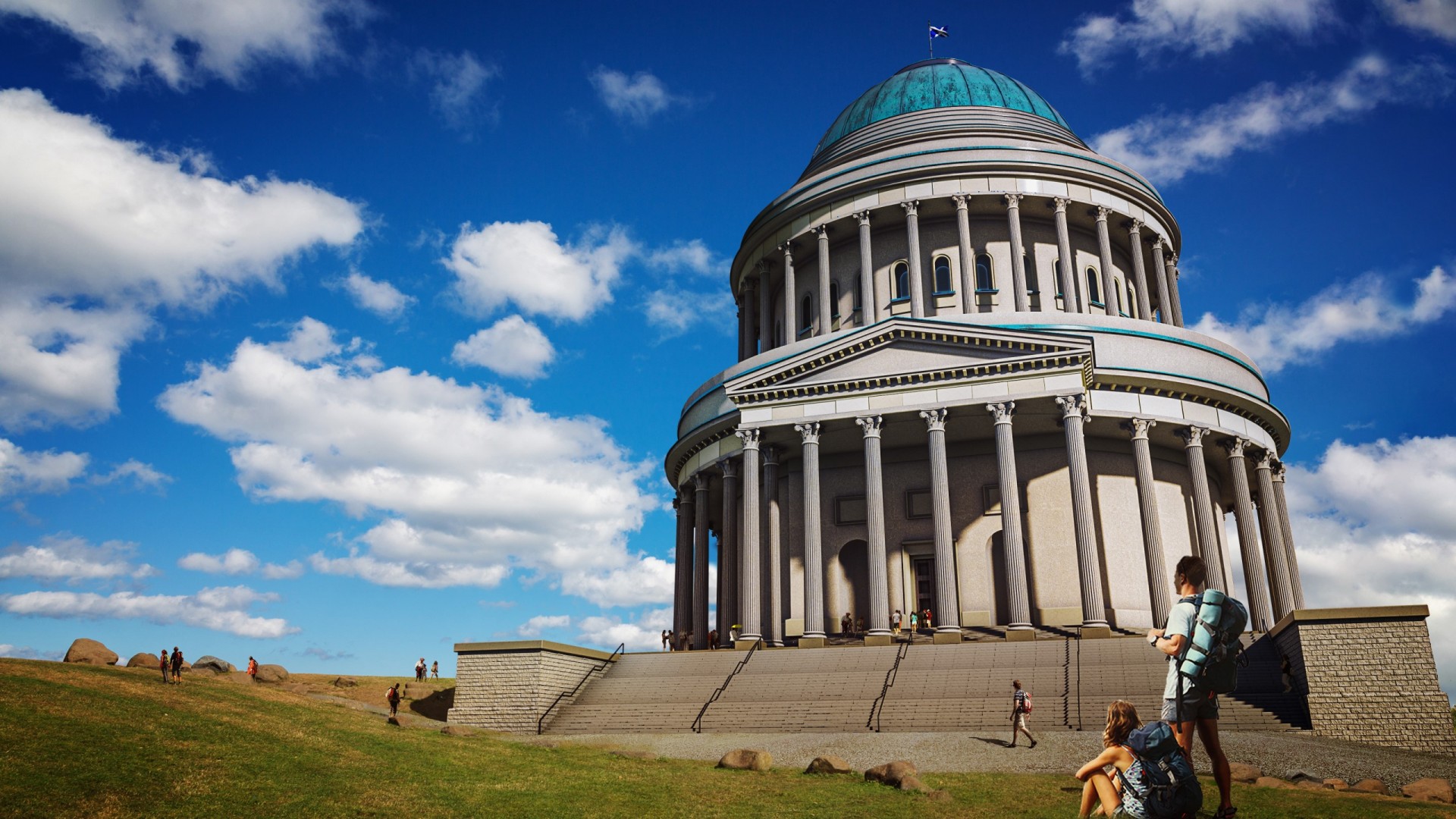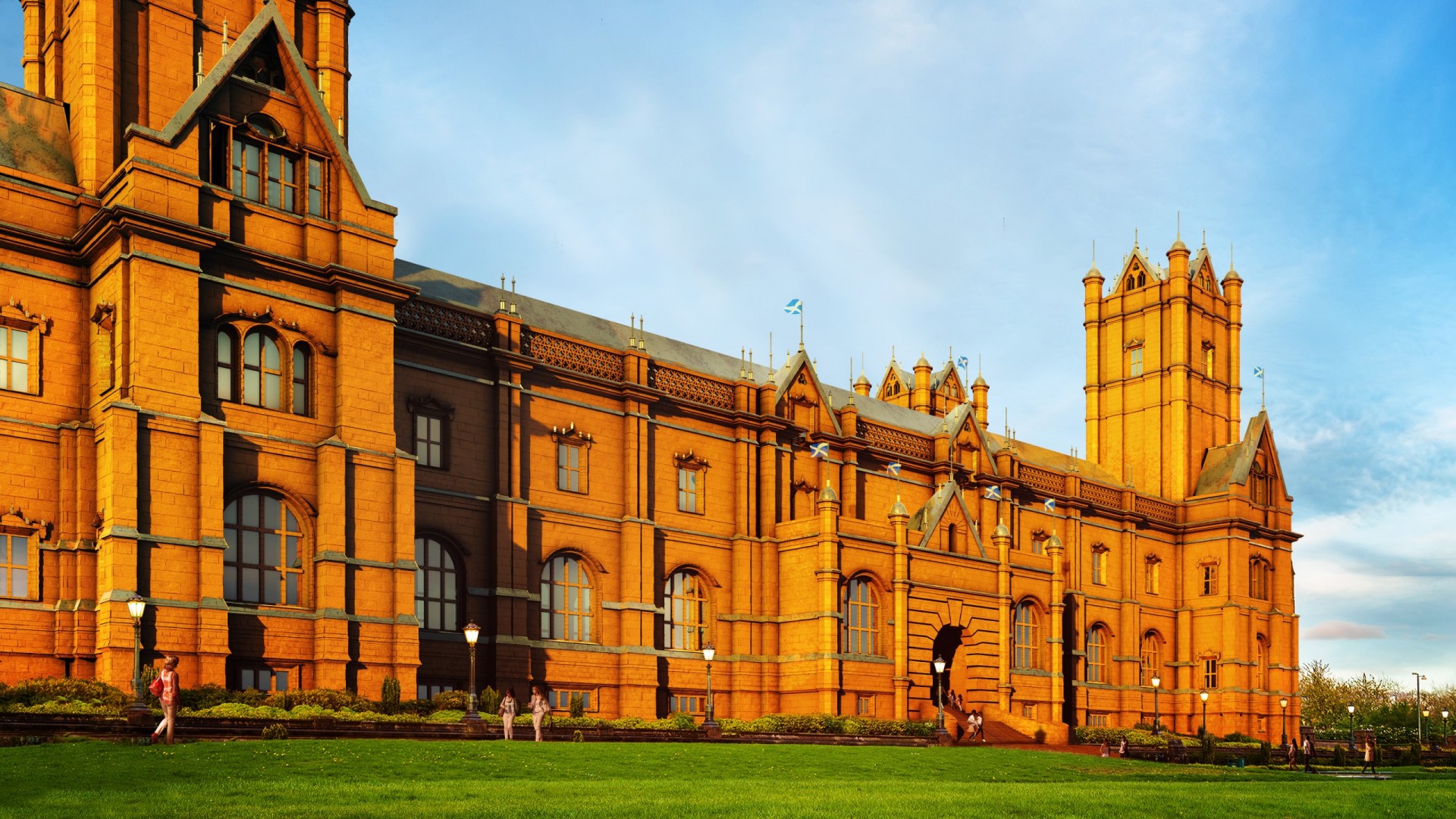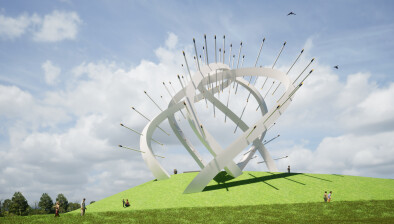And finally… plausible histories

A new series had imagined what some of the UK’s most famous architectural landmarks could have looked had history taken a different path.
Commissioned by TransPennine Express, the initiative has delved into the archives to uncover original plans, competition entries, and alternate architectural options for six buildings in some of the most popular cities on its rail network in Scotland and the north of England.
Helped by This Is Render, the images bring to life what could have been for the National Monument of Scotland in Edinburgh and Glasgow’s Kelvingrove Art Gallery and Museum.
Perched on top of Calton Hill in Edinburgh, the National Monument of Scotland is the national memorial to Scottish soldiers and sailors who died fighting the Napoleonic Wars from 1803 to 1815. It’s a famous structure but gets mixed reviews. It’s even been called “a national disgrace” and the “pride and poverty of us Scots”.
The monument was first suggested by the Highland Society of Scotland in 1816, but there was no available funding from the government. Building work began in 1822 with only a small percentage of the funds needed to complete the construction. Work had to stop in 1829 with only a small part of the Parthenon-style structure ever being built.
The idea for a National Monument was suggested in 1816. Two prospective plans were put forward – a pantheon-style church structure by architect Archibald Elliot and Athenian Parthenon imitation by Lord Elgin. Elgin was given the green light, and construction began in 1822 with Charles Cockerell overseeing the development. However, a lack of funding and changing tastes regarding Greek revival meant the structure was never completed.
The above image shows how it could have looked if Elliott’s design had stayed. And if the funds had been in place of course!

Currently home to a world-famous painting by Spanish surrealist Salvador Dali, Kelvingrove Art Gallery and Museum has an interesting history and folklore.
In 1892 a competition was held to design the structure for the city’s new museum. The winners were the London-based architectural practice, John William Simpson and Edmund John Milner.
After the building was constructed in 1901, a rumour about the building started going round. The rumour was that the museum was built the wrong way round, and the architect threw himself off one of the twin towers when he discovered the mistake. Many people in the city still believe this to this day.
The rumour isn’t actually true, as the competition stipulated that the entrance should face north into Kelvingrove Park.
But what if there had been a different competition winner? Well the building would still face the same way, but it could have looked like this competition entry from 1892 with towers at each corner and a scaled-back entrance.
The full series covers six UK landmarks including Manchester Cathedral and Newcastle’s Black Gate Museum.














